Tools
Reflections on three days at SDinGov

Written by: Phil Hesketh
Published on:
Wow. That was a rush. 2023’s SDinGov has wrapped and I’ve had a few days to collect my thoughts and reflect on what I saw and heard.
It was my frist time at the conference and my first multi-day in person conference since the “before” times. It was also our first time sponsoring an in person event. We decided against getting a stand (maybe next year) as we really wanted to just soak it up, learn about the work being done and meet and talk with as many people as we could.
It was great to see so many of the talks focusing on inclusion this year. In the UK we’re lucky to have a pretty phenomenal Civil Service and public sector who are world leading in this area. It was fantastic to see the work they’ve been doing and the impact it has had and continues to have. I’m still amazed I’d not come across the Universal Barriers before attending!
Accessibility and inclusion is a big focus for us here at Consent Kit. With so many great talks to choose from, having that as a lens made chosing which talks to attend a lot easier. There was so much information, that I’ve probably missed out quite a bit here, but these are my key takeaways from the talks I did attend…
Day one
Stephane Krus - Inclusion: going beyond accessibility & digital capability
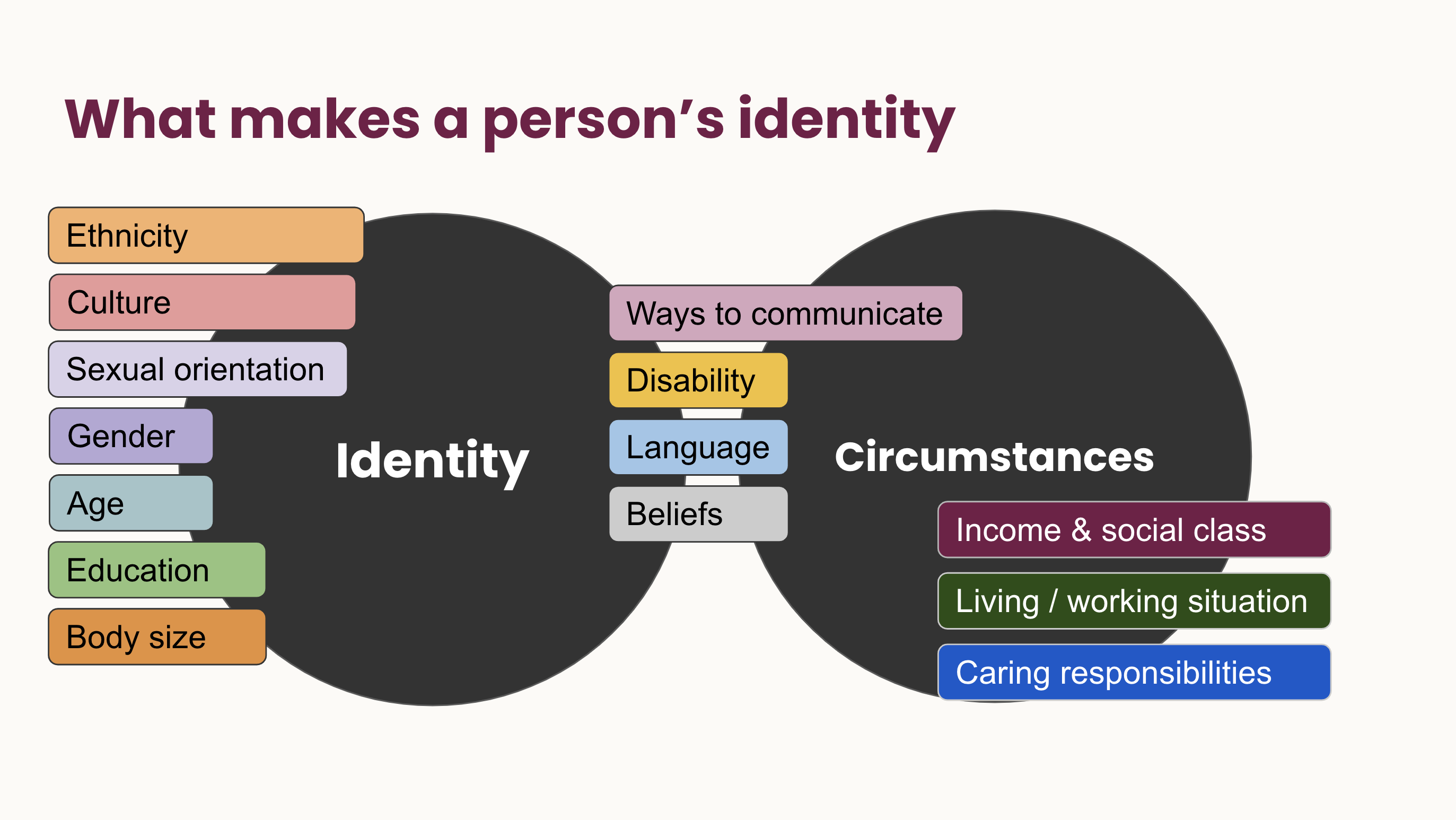
Inclusion must understand identity and circumstances when considering barriers.
Inclusion is more than just accessibility and access to the internet (or being “good with computers” as my mum puts it). I really liked how Stephanie presented inclusion through a person’s identity and circumstances. Then framed that concept through Sylvia Duckworth’s Wheel of Power and Priviledge and how intersectionality could both empower or oppress people.
It was also great to be introduced to the Universal Barriers - which arise for everyone when a task exceeds their capacity. Super helpful framing.
Nina Wafula & Mike Woolf - Taking an equitable design approach: lessons from designing a mental health service for young black people
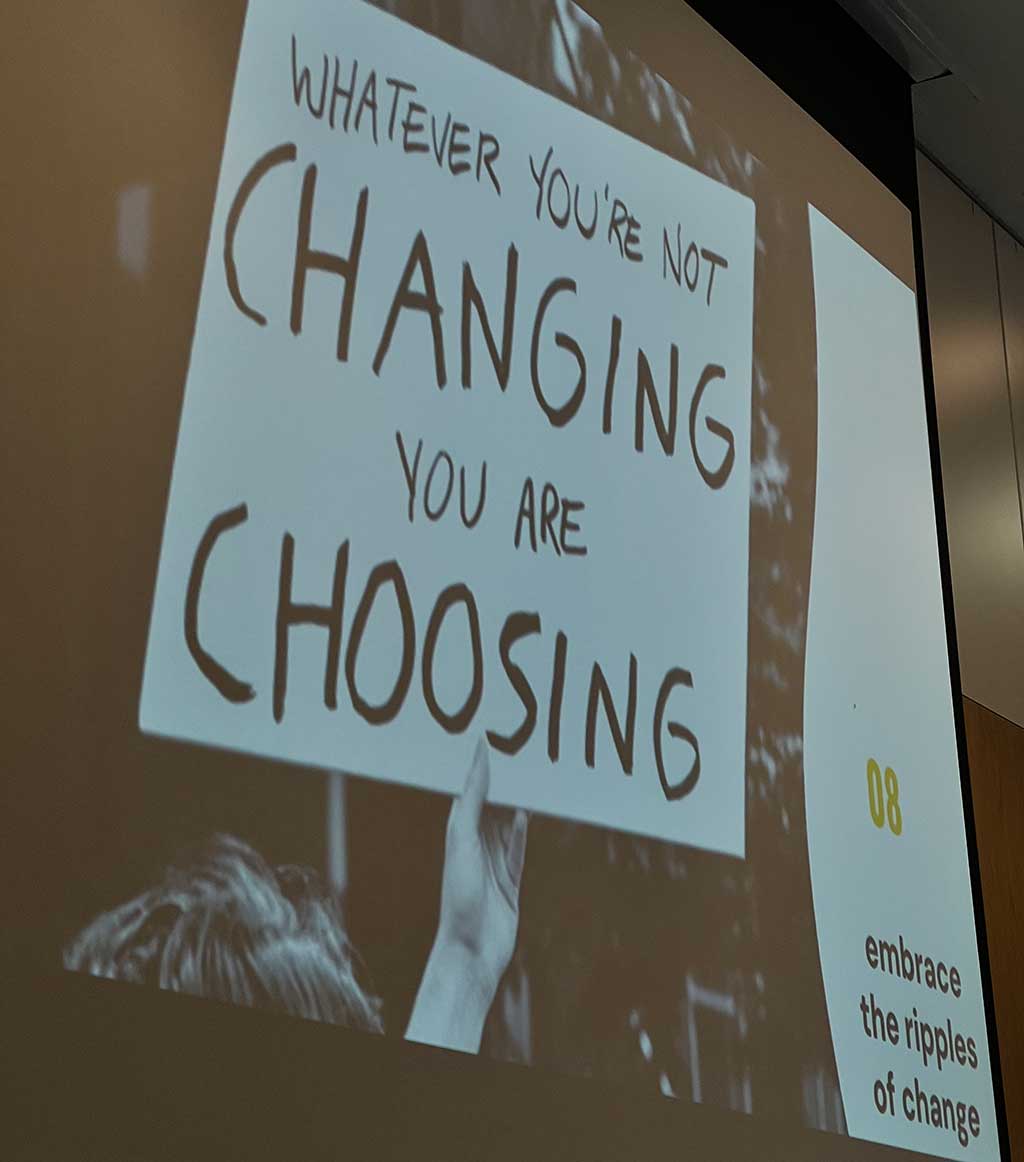
One in four young people in the UK experience challenges with their mental health. The average waiting time for support is 2 years. More than one in four people attempt suicide in that time.
This talk really stuck with me. It was a powerful case study on mental health issues faced by young black people and how the organisation Young Minds were supporting them.
Two things that felt quite real for me personally - the tension that sometimes/often exists between organisational strategy and user needs. I always get anxious towards the end of a project where you’ve gone through this whole process of imagining something better with people to then have to align or in some cases re-align the organisation. So it was amazing to hear how they actually managed to do that.
The second thing was how a lack of emotional support and people’s circumstances over a period of time can stop you knowing how to (or even that its okay to) ask for help. They explored this using diary studies and co-design. Amazing to hear how they were able to adapt how their service was delivered to their insights and cross that chasm.
Natalia Riley & Becky Kuang - How psychological safety enables inclusive design
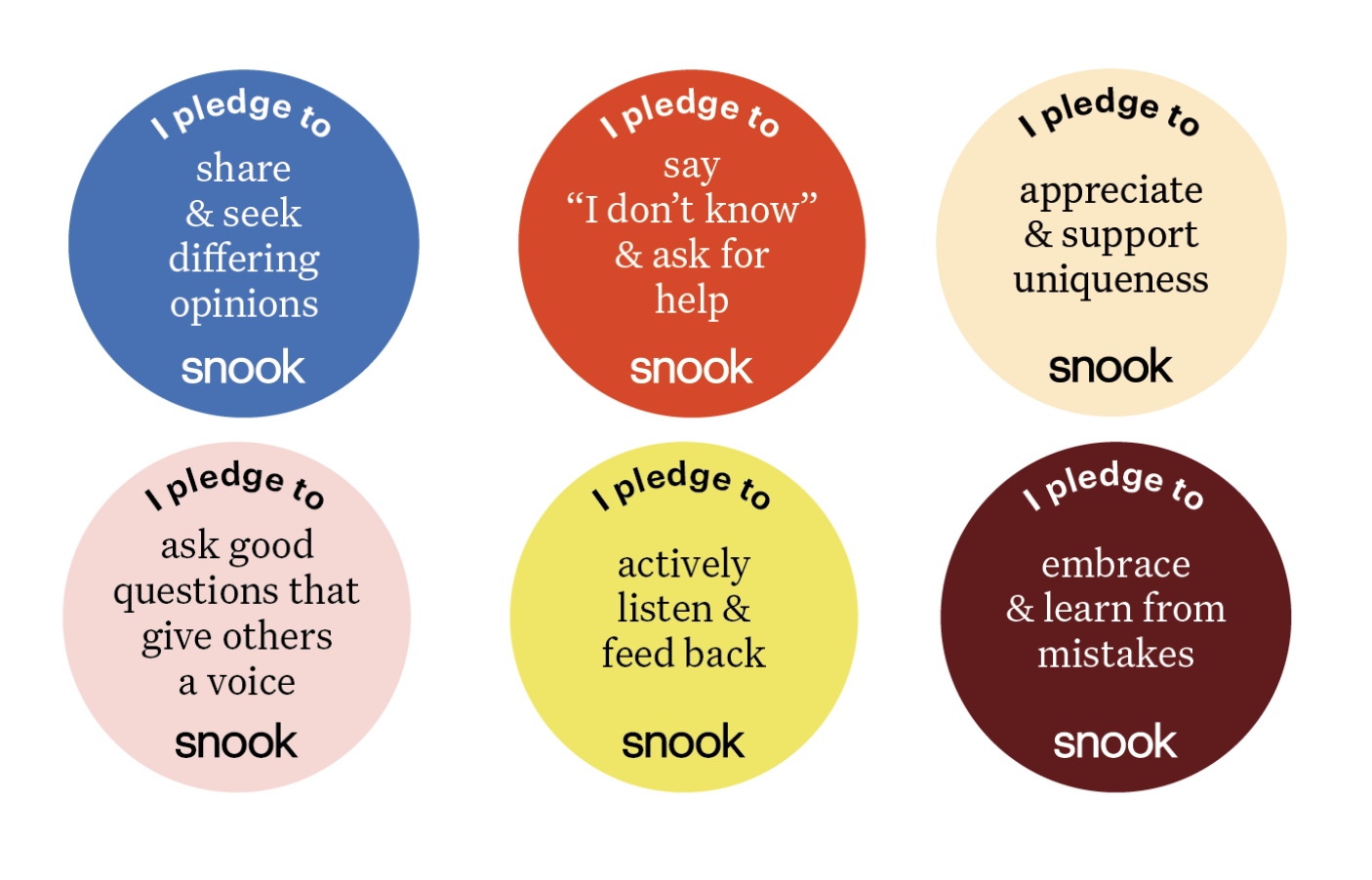
Psychological safety is essential for inclusive teams.
I am really curious about group dynamics and the invisible social contracts that are constructed when people come together. Working inclusively relies on our ability to create spaces where people feel meaningfully safe and heard. Natalia and Becky from Snook shared their principles for achieving this - so hard to pick just one (I pledged to actively listen and feedback - but mostly because it had the least votes and its an old favourite!)
Day two
Rochelle Gold - The Journey to Eutopia
It’s the journey not the destination.
I wondered if the title was a sly dig at Brexit. Not so. Turns out a Utopia derived from Greek means “no-place” (essentially unobtainable), whereas a eutopia means a “good place” (a realistic concept of a good place or something that IS attainable).
Having spent the last 4 years self funding a start-up to help researchers recruit, prepare and respect their participants I appreciated the message of incremental improvements and laying the groundwork for bigger things in the future. I can’t imagine what this must be like inside an organisation as enormous as the NHS!
Ned Gartside - How services can be planet-centric by design
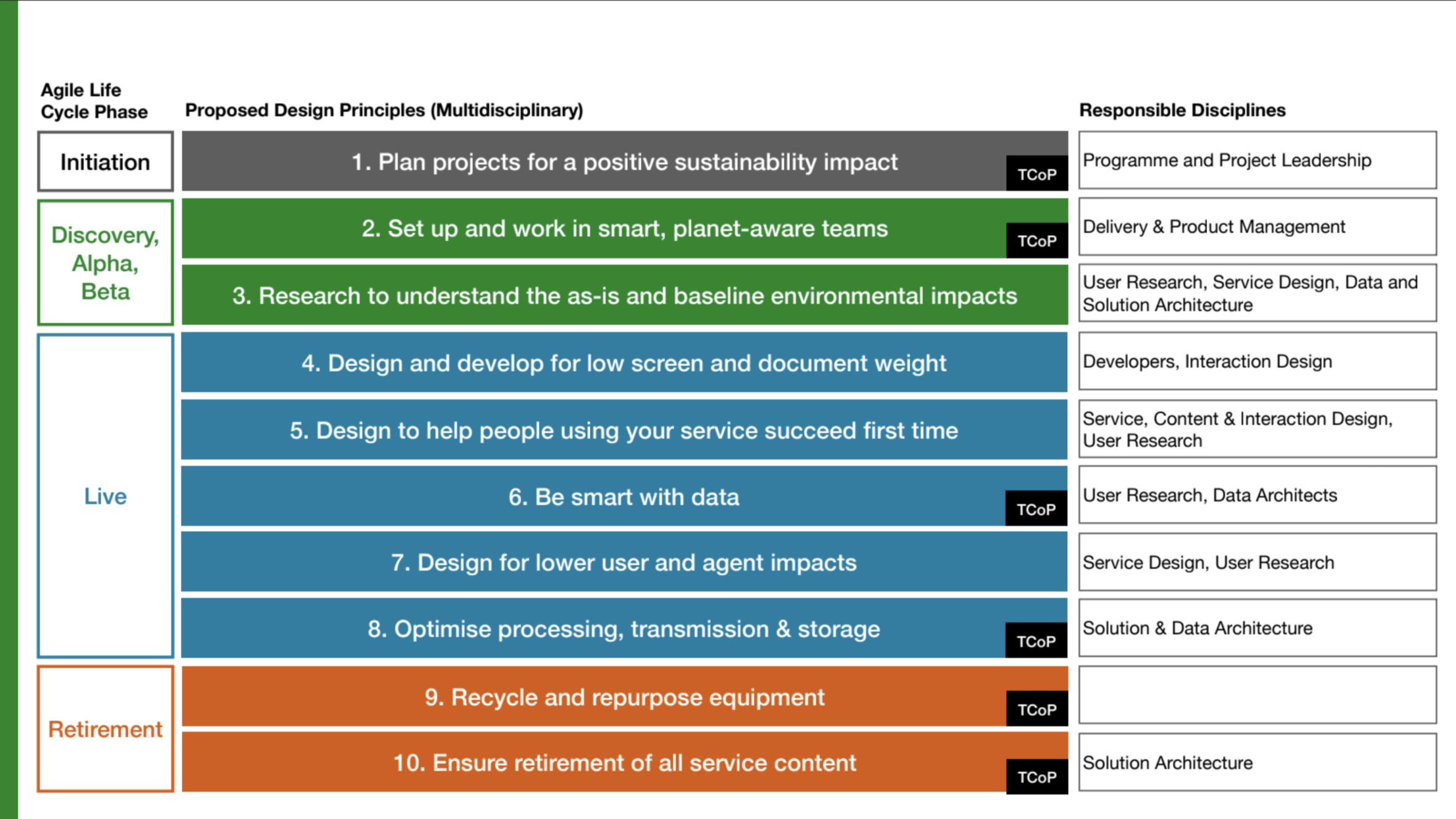
Sustainability is complex. Planet-centric principles can help us simplify that.
Deviating slightly from the inclusivity track I set out on, I was really keen to see Ned’s talk on planet centricity and understand how he and the team at DEFRA were thinking about that. As designers we love a problem, and climate change is about as big as they come.
the 10 planet centric principles are:
Plan projects for a positive sustainability impact
Setup and work in smart planet aware teams
Research to understand the as-is and baseline environmental impacts
Design and develop for low screen and document weight
Design to help people succeed in using your service first time
Be smart with data
Design for lower user and agent impacts
Optimise processing, transmission and storage
Recycle and repurpose equiptment
Ensure retirement of all service content
It was eye-opening to see how digital was both enabling and endangering our transformation towards a sustainable future. And just how complex measuring all this becomes.
It was cool to see all this knowledge synthesised into Planet Centred Principles that span across the service life cycle.
Jane McFayden & Anna Khoury - Designing for people with discalculia or low numeracy
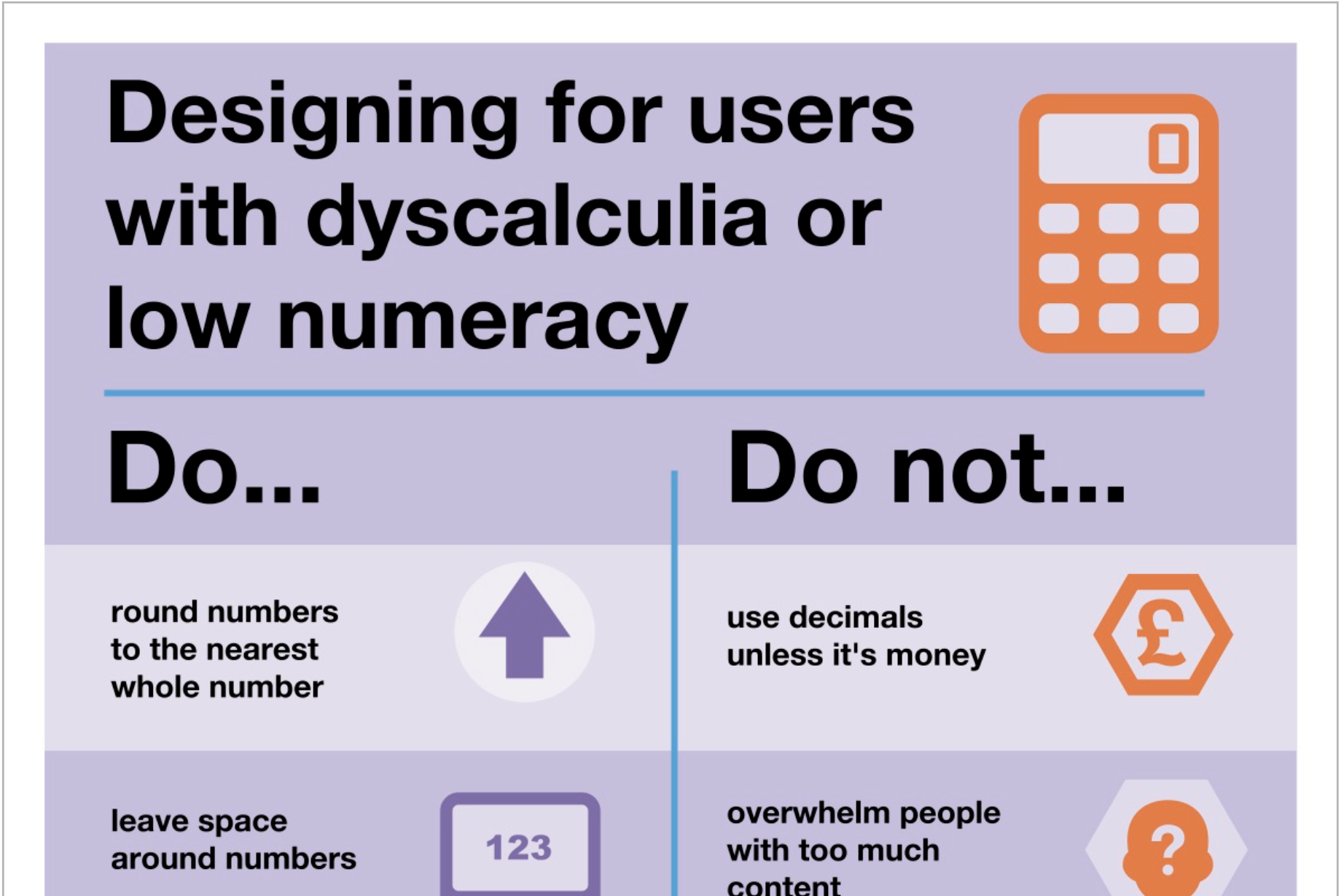
Discalculia effects around 1 in 20 people in the UK.
Really interesting to see the work being done around discalculia and low numeracy (in particular the poster) and how people interact with and understand numbers in content.
One thing that stood out was using text descriptions instead of tables to display numerical data. There was an interesting conversation afterwards about how to practically apply these learnings.
We’ve got a dyslexia “friendly” mode on our forms which changes the background colour and increases the space between letters and words. I wonder if we’ll see more toggles like this in the future, or if a better pattern will emerge? Making a note to check if something like ChatGPT could interpret the data in a table in a more descriptive text based way… (although it probably wouldn’t get past the planet-centric principles for energy usage!)
Ali Fawkes & Jenni Parker - Research & co-design with children: a beginners guide
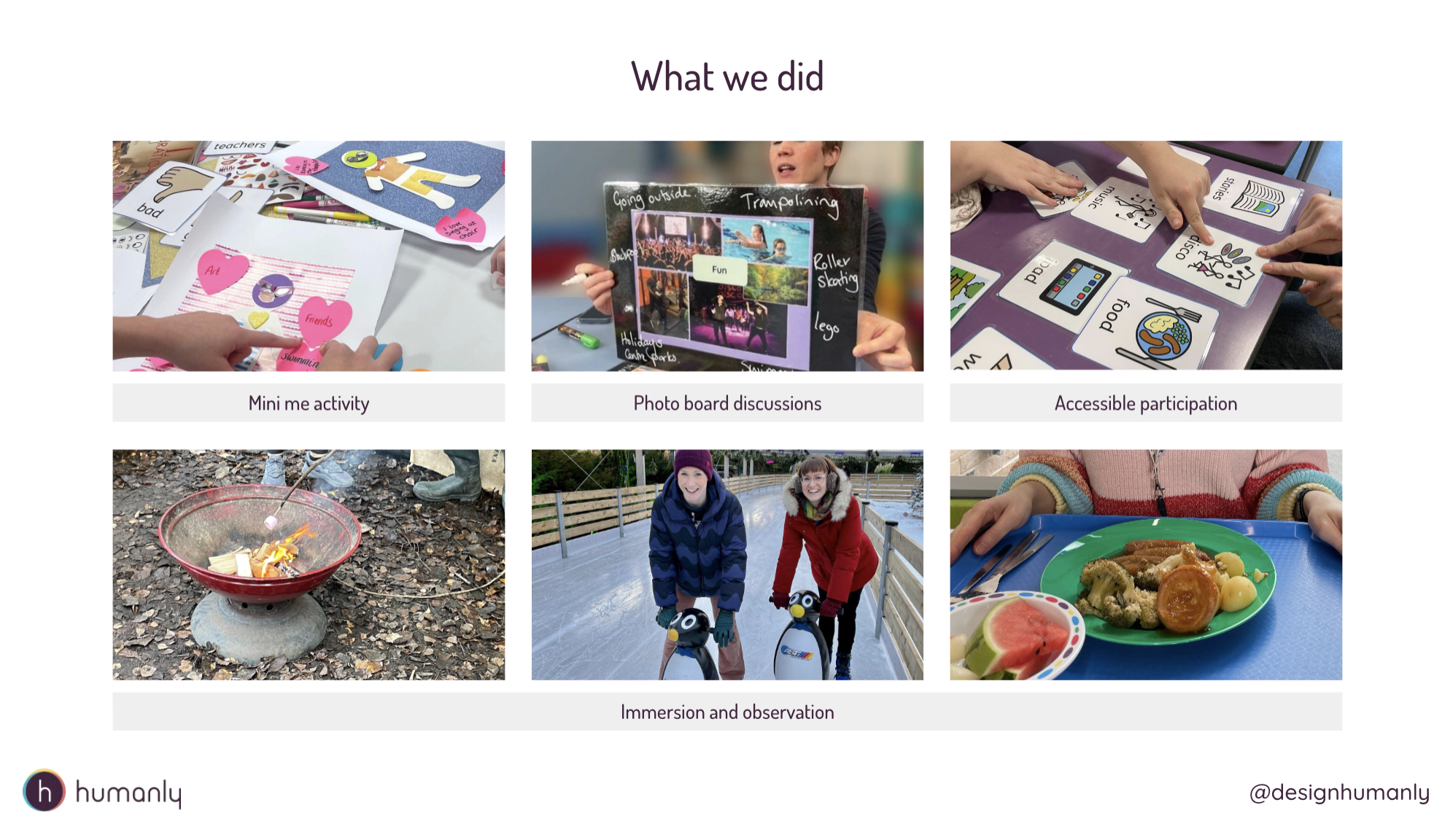
Sensemaking research with children is intense. But fun.
We get so many questions about how to practically obtain and manage consent with children. This was a fantastic case study from the lovely folks at Humanly. They took us through their planning and preparation process (consent, incentives, confidentiality, accessibility, tailoring to individuals and last but certainly not least, safeguarding) and how they built trust doing that.
It was great to see how they set this project with so much care and attention, and how that preparation built confidence and trust with everyone else in the process. Go slow and fix things. And also how they navigated landscape for consent / ascent within a complex social environment, by providing multiple activities to choose from and allowing children to move in and out of those activities at will. I can imagine that was some nap after making sense of all of that research data!
Day three
Julian Thompson - Transcending black realities: The possibilities of joy and imagination
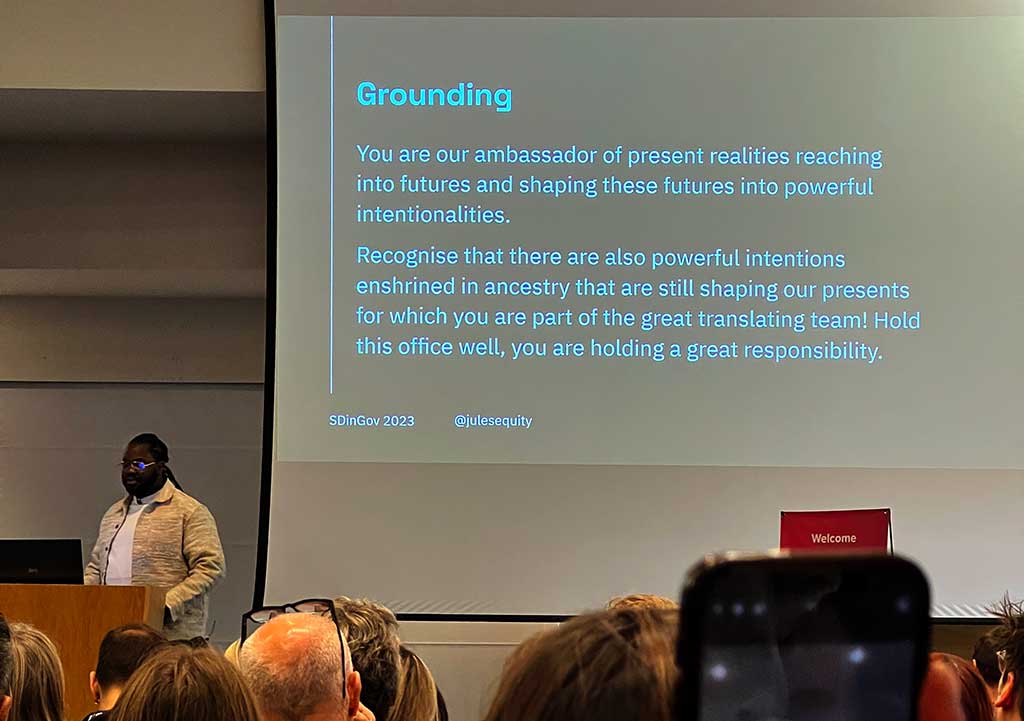
Equity = repair.
Julian’s talk was amazing. It feels weirdly easy to forget how important joy and play is in the creation of things when the pressure is on. I’ve often found it quite difficult in formal contexts. I guess this underlines the importance of creating psychologically safe places for teams and the work to happen.
Two things that really struck me about Julian’s keynote. The first was the fact that to achieve equity means to repair. Revisiting how we got here to understand what needs to be undone or made right before we can move forwards.
The second was how trauma or a crisis impact our ability to imagine. Kind of like how cognitive scarcity dramatically reduces a persons window for planning or thinking about the future. I’ve heard talk of a crisis of imagination a lot, and this made a lot of sense as to why. I wish I’d taken more notes at the time on this one, but it was very engaging and I got swept up in it!
Martin Jordan and Kara Kane - The long slog of public service design

Public service design is a baton relay ultramarathon.
Really loved how candid this talk was. The work is hard. It takes a long time. So much of what I’ve seen around service design seems to focus on almost the fun bits - ideation, experimentation and so on. But less so on the practicalities of doing the work. Reading the organisation. Identifying opportunities, creating capabilities that enable the work to happen. And the importance of patiene and persistence.
The presented these as 5 recipies, which are:
Offer a tool that multiplies
Make yourself useful
Communities are the glue
Be ready to use the window
Let’s try again
Love communities as the glue to hold it all (and ourselves) together. I was born in the 80’s and have grown up in an ideology that focusses on the individual over the collective. Feels like we got that one horribly wrong somewhere along the way. It reminds me of the saying “if you want to go fast, go alone. If you want to go far, go together.”
Looking forward to the book coming out soon - follow its progress: #strongdesign on LinkedIn and the platform formerly known as Twitter.
Martha Edwards - Is co-design futile?
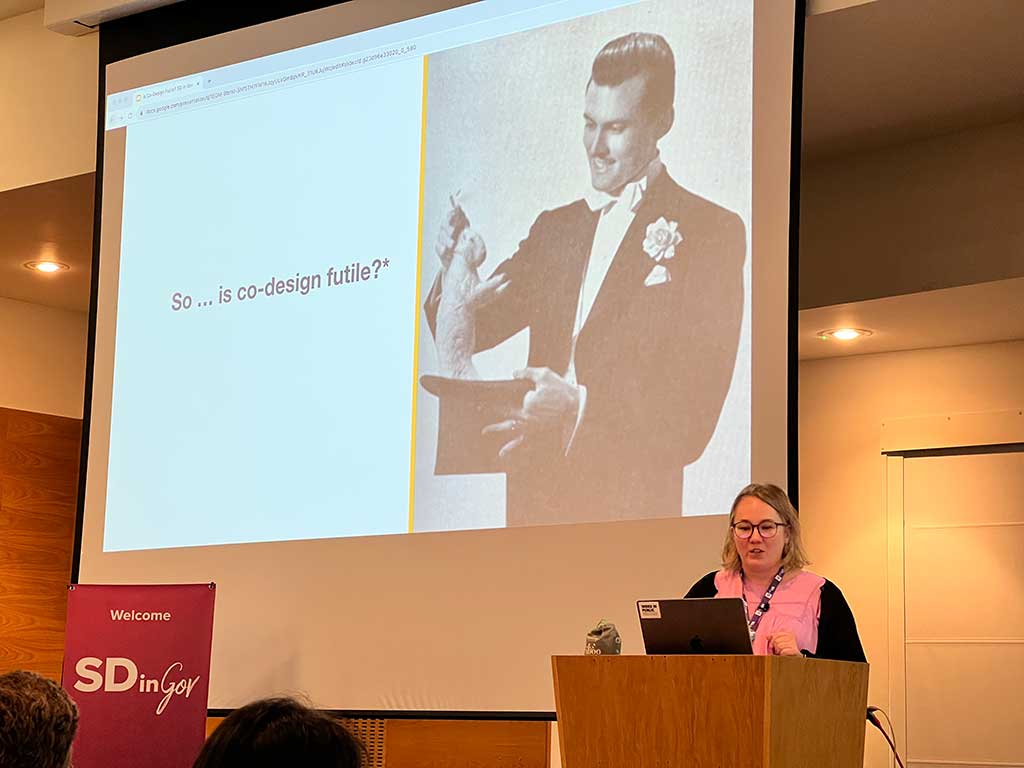
Co-design is futile if decision making power cannot be shared.
A really thoughtful provocation of the realities of doing co-design in government. And if it was in danger of becoming a buzzword, or actually beneficial. The nub of it was really looking at actually sharing power, and if it was appropriate to use co-design as a method on things that you might not meaningfully be able to share power on.
I really appreciated how Martha started out saying that it was okay to not feel bad if you’d never actually “done” co-design. And also how she had provided enablers that were present when co-design was and had been done successfully. FYI, these were:
The users/co-designers were respected as experts
Its not just a design process
Leaders were present who supported and could protect the work
There was an urgent need for greater equity
My 3 takeaway reflections
So stepping back and thinking about the conference as a whole… Three themes (with a lot of overlap) seemed to emerge…
I feel a pressing need to be more trauma informed
The first has to be trauma. Before I get into this I want to say: I’ve seen more and more people talking about being trauma-informed online, but I’ve not really had a chance to really immerse myself in the literature around this yet - so I’m probably missing loads of obvious things here… Having said that, as I become more aware of it, I started to realise it is in and around absolutely everything. Not just in our participants, co-designers or other people we’re learning from/with. But in our colleagues and in ourselves. It’s in the systems we’re replacing and maybe in the systems we’re creating, or our processes we move through as we’re “doing the work”.
In an emergency on a plane, they tell you to put your own mask on first. Because if you’re suffocating you can’t help anyone else. If we’re building communities and creating psychologically safe spaces, trauma is going to come up. And we don’t always know how, or when or what that will look like. But (certainly as a researcher) I feel that I should prepare myself for it. So with that uncertainty, how do we develop that emotional resilience into our day-to-day so that we can be prepared and importantly, present for when it does?
I know research isn’t therapy. I’ve been told “this feels like therapy” a lot, because some of the methods or approaches we use in research can feel the same to a participant. I’m certainly not a therapist. Against a backdrop of a 2 year waiting list for young people to get access to mental health support - and then 1 in 4 of those waiting attempting suicide (Young Minds), could communities or peer support groups be used to bridge this gap? Surely that’s better than doing nothing at all?
Communities are a multiplier
That segues into the importance of communities as my second theme. And I’m kind of bundling psychological safety and co-design into this aswell. Communities seem to have so many (and some perhaps unintended) benefits. As a support system. As knowledge exchange. Maybe even as a vehicle for research itself (thinking the rise of research panels to aid recruitment, and co-design).
I’ve been aware of this for a while now, but its not something that I feel like I’m particularly good at doing. The question I always fall back to is “how do we scale it up in a meaningful way” but the more I think about it, that just feels like the wrong question. Maybe we don’t. Maybe its just lots of smaller communities.
More long term thinking
And finally, the fact that changing anything at a large scale is a “baton relay ultra-marathon”. The longest timeline for a project I heard about was 50 years. FIFTY. This notion of move fast and break things proven to be a terrible idea. But I feel like that’s somehow set an unconscious expectation that things can and should happen quickly.
What happens if we flip that? Move slow and fix things. Because the work is long and it is hard. Equity is to repair. Maybe that is the road to eutopia?



